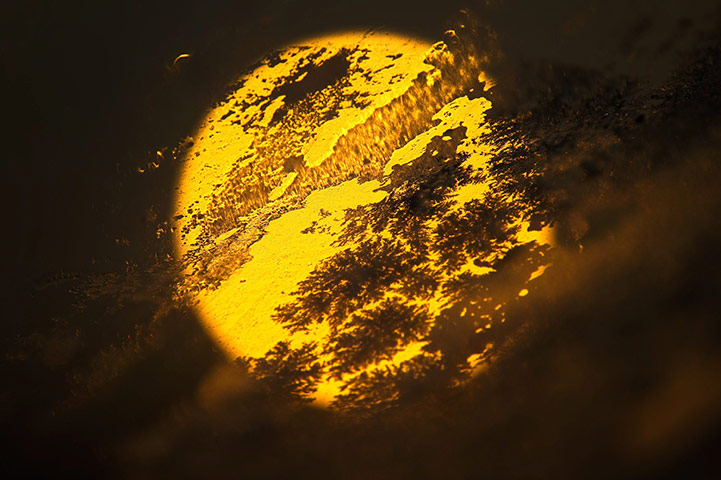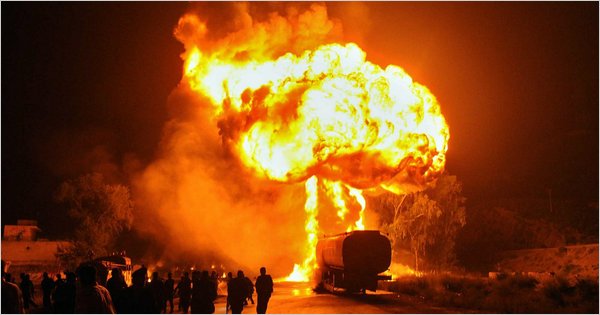Just outside the bright lights illuminating the democratic movements in the news this month lie the shadows of history. Triumphant demonstrators smiled radiantly in Egypt, while the army quietly consolidated control. As the tottering Muammar el-Qaddafi took self-caricature to new heights (breaking his previous record), other despots doled out cash and intimidation to make sure they weren’t next in line. Western governments boldly announced their commitment to peaceful transitions, while sending envoys to curry business–much of it with autocrats–at an international arms show. American pundits celebrated liberation and condescended to advise the fledgling democracies, while acting as if the US government and American corporations had never been the mainstays of the regimes being deposed for corruption and brutality.
So it is that I find this photograph a fitting image for the current historical moment.
The sun is seen through a windscreen in Dresden, Germany. The screen would be invisible but for the ice crystals that are occluding the thick yellow disk hanging in the night sky. One strand and part of another could be molten gold, while the dark splotches could be oil, dirt, bacteria–anything capable of smothering human life by slow accumulation. The deep contrasts of light and darkness allude to German expressionist cinema–an expression of a time in history when the forces of darkness were massing beneath modernity’s cosmopolitan veneer. The small crescent of light limning the smaller sphere in the upper left quadrant carries a different code, however, suggesting that nature’s regularities will continue, and that may be enough to provide some basis for hope.
Other regularities persist as well. War, for example.
This photograph is one example of an image that appears periodically now: a convoy of oil tankers on its way to supply US troops in Afghanistan has been ambushed. Here, as is often the case, the attack occurred in Pakistan, for reasons that are not mysterious. What strikes me is now much this photograph resembles the one above. Military action shot and artsy nature image are drawing on the same cultural repertoire, and in fact speaking to each other. Light and darkness, the sun and ice or a fireball and unharmed spectators, the effect is much the same. A source of power has become strangely complicated, and energy seems to be draining out of the future. (The explosion mimes a mushroom cloud, which imitates the power of the sun, which sent the rays that made the plants that became the oil, so the circle of life and death may be tighter than we realize.) If those in the picture aren’t exactly in a panic, their comfortable distance from the burn isn’t a sign of hope, either. When war assumes the regularity of nature, you might as well get used to it.
Like the windscreen, the first photograph provides a trick of light: We see the sun, but it somehow can seem to mirror the earth: a bright place, covered with clouds and continents, vital and yet distant, a heavenly body yet strangely vulnerable and capable somehow of becoming lost. There is another trick as well: the sun that seems to be slipping into darkness, is in fact rising. The sun precedes the day, which has not yet come. Light and shadow are forever bound together, but it can make all the difference which way one is moving. Let’s hope that the light of history is on the rise for those wanting democracy rather than dictatorship and peace rather than war. One must admit, however, that bright moments of change fly upward like sparks from a fire, while the darkness remains. Hope, yes, but it will take more than hope.
Photographs by Arno Burgi/EPA and A. Majeed/AFP-Getty Images.


Endless Hope…
[…] government and American corporations had never been the mainstays of the regimes […]…